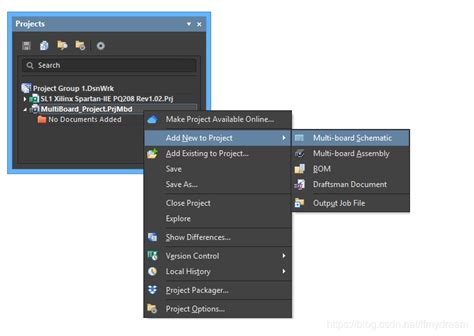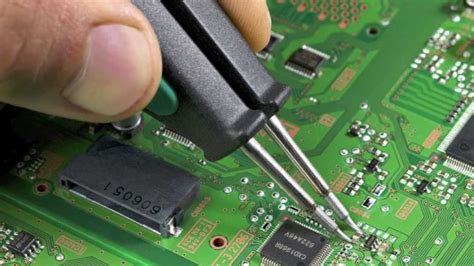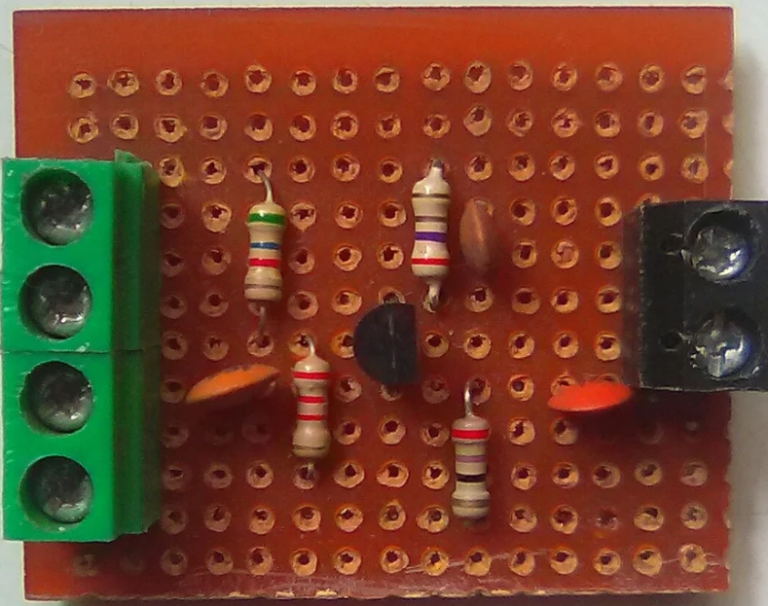Mastering Altium Multiboard Assembly: A Comprehensive Guide
Key Takeaways
In exploring Altium Multiboard Assembly, it becomes clear that a comprehensive understanding of the pcb assembly process is crucial for engineers and designers alike. This guide highlights the importance of efficient design practices and the management of component libraries to streamline workflows. By utilizing advanced features within Altium, users can enhance performance, ensuring that pcba projects are not only effective but also integrated seamlessly. Successful multiboard projects often rely on best practices for optimization, enabling designers to troubleshoot common issues that arise during assembly. Remaining aware of current trends in multiboard technology can also give practitioners a competitive edge, fostering innovation and efficiency in their designs. Overall, mastering these key components is essential for achieving successful outcomes in Altium Multiboard Assembly projects.
Introduction to Altium Multiboard Assembly
In today’s complex electronic design landscape, Altium Multiboard Assembly offers a powerful solution for managing multiple printed circuit boards (PCBs) within a single project. The integration of various components through pcb assembly is critical for ensuring optimal performance and functionality. This platform simplifies the design and collaboration process, enabling engineers and designers to craft intricate multiboard systems with ease. Key to leveraging the full potential of PCBA is understanding how to orchestrate the interactions between each board seamlessly. This entails diligent management of component placement, connectivity, and design rules, all while keeping track of revisions and updates across the board suites. Utilizing Altium’s robust features can lead to well-organized documentation and efficient assembly processes, allowing teams to focus on innovation while minimizing the risks associated with complex designs. Through a mix of intuitive tools and advanced capabilities in multiboard assembly, professionals gain an essential resource for navigating the challenges of modern electronic projects, ultimately driving better outcomes and enhanced product reliability.
Key Features of Altium for Multiboard Projects
Altium provides a robust set of features tailored for multiboard assembly, enhancing the overall productivity and efficiency of pcb assembly processes. One of the standout characteristics is its real-time collaboration capabilities, allowing teams to work on different boards simultaneously without conflicts. This feature is particularly beneficial in large projects where multiple designers contribute to various aspects, ensuring seamless integration across the entire assembly.
Additionally, Altium’s advanced visualization tools give a clear overview of component placement across boards, which aids in avoiding placement errors and enhances the overall layout organization. By incorporating design rule checks (DRCs) within the environment, engineers can preemptively address potential issues before initiating pcba manufacturing.
Another key element is the management of component libraries; Altium simplifies this aspect by providing centralized library management that facilitates updates and changes across all connected boards. This streamlining ensures that every component in your design meets industry standards and specifications, which is vital for maintaining quality and performance.
Moreover, Altium’s capabilities extend to automatic cross-referencing between different boards, effectively linking components that interact with one another. This feature not only saves time but also reduces the chance of oversight during integration testing. With these powerful functionalities at their fingertips, engineers can focus on innovation rather than getting bogged down by process challenges within their multiboard projects.
Step-by-Step Process for Designing Multiboards
Designing multiboards in Altium Multiboard Assembly requires a structured approach to ensure efficiency and effectiveness. The first step is to define your project requirements clearly. This includes specifying the overall functionality of the multiboard, determining the necessary PCB assembly components, and identifying any specific constraints, such as size limitations or thermal considerations.
Next, it is crucial to create a comprehensive component library that includes all necessary parts for the multiboards. Each component should be thoroughly documented with specifications and footprints. Utilizing Altium’s centralized management system will help streamline this process and maintain consistency across multiple boards.
Once your libraries are set, proceed with creating the schematics for individual boards. This involves connecting components logically to achieve desired performance metrics. At this stage, it is essential to focus on how each board will interact within the complete assembly. A detailed schematic not only aids in better understanding but also reduces integration issues later in the design process.
Following schematic design, move onto layout considerations. Here, you should arrange your components on each board to optimize space and signal integrity while ensuring ease of manufacturing. For example:
| Component Type | Suggested Placement | Considerations |
|---|---|---|
| Power Modules | Edge of PCB | Minimize trace lengths for current |
| High-Frequency | Center | Reduce interference |
| Passive Elements | Corners | Save space |
Finally, simulate your design within Altium to identify potential issues before production begins. Conducting these simulations helps ensure that all boards will operate harmoniously when integrated into a final system.
By adhering to these steps in designing multiboards, you can enhance the performance of your PCBA solutions while minimizing errors and inefficiencies during assembly.
Managing Component Libraries in Multiboard Assembly
Effective management of component libraries is crucial when working on multiboard assembly projects within Altium. A well-organized library system not only streamlines the pcb assembly process but also enhances the overall efficiency of design and manufacturing. When integrating multiple boards, keeping track of components across various assemblies can become daunting. Thus, it is essential to create a centralized library that ensures consistency and availability of components.
To start, consider the importance of categorizing your components effectively. By using specific naming conventions and organizing components according to their function or type, you can facilitate easy retrieval during the design phase. This strategy significantly reduces the time needed to search for parts, thereby accelerating your pcba workflow.
Moreover, utilizing version control for component libraries helps in maintaining an accurate database of all elements used in different versions of your designs. As designs evolve, ensuring that you are using the most updated components will minimize discrepancies during the multiboard assembly phase.
“An organized library leads to an organized mind—streamlining your pcb assembly process begins with effective organization.”
Additionally, regular audits and updates to your libraries are vital practices that keep them relevant and functional. This proactive approach not only aids in identifying obsolete or duplicated components but also reinforces better collaboration across teams working on single or multiple board designs.
Lastly, leveraging cloud-based solutions for component library management can enhance accessibility and collaboration among team members who are geographically dispersed. By allowing multiple users to access and make changes to a shared library simultaneously, you foster a more dynamic work environment that improves overall project outcomes.
In summary, managing component libraries effectively within your multiboard assembly workflow empowers engineers and designers to achieve quicker turnaround times while maintaining high-quality standards essential for successful integrations and performances in electronic designs.
Best Practices for Optimizing Multiboard Designs
When it comes to enhancing the efficiency of pcb assembly processes, understanding the best practices for multiboard designs is crucial. A well-structured approach not only streamlines pcba activities but also ensures optimal performance across interconnected boards. One of the primary strategies involves maintaining clear and organized design files; ensuring that all components are accurately sourced and classified can significantly reduce confusion during the assembly stage.
Additionally, implementing a consistent layer stack-up can aid in reducing electromagnetic interference (EMI), which is vital for achieving reliable operation in complex systems. Another effective practice includes thorough documentation of each stage of the design process, allowing team members to collaborate seamlessly while troubleshooting potential issues. Emphasizing modular design will also support easier upgrades and modifications, thereby extending the product lifecycle.
Moreover, utilizing simulation tools within Altium Multiboard Assembly can preemptively highlight potential design flaws before they escalate into more significant challenges during pcb assembly. Integrating feedback loops from previous projects fosters a culture of continuous improvement that optimally aligns with manufacturing capabilities and reduces lead times for pcba workflows.
By adhering to these practices, engineers and designers can ensure that their multiboard projects not only meet high performance standards but are also efficient in terms of cost and time management. This holistic strategy sets a robust foundation for successful multiboard assembly, making certain that each component operates cohesively within the system ecosystem.
Troubleshooting Common Issues in Multiboard Projects
When engaging in Altium Multiboard Assembly, engineers often encounter a variety of challenges that can impact the efficiency and quality of their pcb assembly processes. One common issue arises from misalignment during multiboard connections, which can lead to performance hiccups. Ensuring proper component placement is vital to mitigate discrepancies that might occur during assembly.
Another frequent concern involves the management of component libraries; an outdated or improperly configured library may result in conflicts or inaccuracies, affecting the final output of the pcba. It’s essential to regularly update and validate these libraries, ensuring that they align with the current project requirements.
Moreover, signal integrity is crucial, especially in designs involving high-speed components; any inadequate grounding or routing can foster issues like crosstalk and attenuation. Performing thorough simulations before finalizing your design helps identify these problems early on.
Lastly, keeping clear documentation and maintaining a collaborative approach among team members can significantly streamline troubleshooting efforts. By addressing these common issues proactively, teams can enhance the overall effectiveness of their multiboard projects while ensuring a seamless integration process.
Case Studies: Successful Multiboard Integrations
In recent years, numerous organizations have leveraged Altium Multiboard Assembly to elevate their designs through innovative integrations. One notable example involved a leading consumer electronics company that integrated multiple PCB assemblies to streamline their production process. By implementing multiboard designs, they achieved a reduction in manufacturing costs while simultaneously enhancing product performance. Their approach facilitated improved communication between various components, ensuring that the PCBA was optimized for functionality and reliability.
Another case study highlights a telecommunications firm that integrated complex pcb assemblies within its latest networking equipment. By utilizing advanced features of Altium, they efficiently managed diverse component libraries, leading to a cohesive structure across all boards involved in the project. This not only simplified the assembly process but also resulted in significant time savings during manufacturing.
Lastly, an automotive supplier utilized Altium’s multiboard assembly capabilities to develop an intricate control system for electric vehicles. The successful integration of multiple PCBs allowed for better heat dissipation and improved signal integrity, addressing typical challenges faced within the automotive sector. Through meticulous design and assembly practices, they showcased how effective management of multiboards can drive innovation and deliver outstanding results in demanding applications.
These case studies underscore the versatility and effectiveness of Altium in achieving robust multiboard projects, paving the way for enhanced performance across various industries.
Future Trends in Multiboard Assembly Technology
As the demand for more complex electronic systems rises, multiboard assembly technology is evolving to meet new challenges. One of the most notable trends is the integration of advanced automation in the pcb assembly process, which enhances efficiency and reduces human error. With machine learning and artificial intelligence becoming more prevalent, companies are leveraging these technologies to improve their pcba workflows, leading to faster turnaround times and better quality control.
Additionally, a shift towards modular design is emerging, where components can be easily interchanged within a system. This adaptability allows for easier upgrades and maintenance while streamlining the overall design process. The rise of IoT devices also plays a significant role in how multiboard systems are designed and assembled. In response to this trend, manufacturers are focusing on creating smart assemblies that can communicate with each other, enhancing system capabilities.
Sustainable practices are gaining traction as engineers seek to minimize waste during assembly. This includes adopting eco-friendly materials in pcb assembly, which not only benefits the environment but also attracts environmentally conscious consumers. As these trends advance, engineers will need to stay abreast of new technologies and methodologies that can optimize their multiboard projects for both performance and sustainability.
Conclusion
In summary, mastering Altium Multiboard Assembly is a pivotal step for engineers and designers looking to enhance their project outcomes. This comprehensive guide has illuminated the key aspects of multiboard design, emphasizing the importance of effective pcb assembly techniques. By understanding how to manage component libraries efficiently and applying best practices, practitioners can ensure that their pcba projects are not only streamlined but also optimized for performance. Additionally, troubleshooting common issues helps in minimizing setbacks during the assembly process, while real-world case studies provide invaluable insights into successful multiboard integrations. As technology continues to evolve, staying abreast of future trends in multiboard assembly will be essential for maintaining a competitive edge in this dynamic field. Embracing these learnings can lead to a significant improvement in workflow and results for complex electronic designs.
FAQs
What is Altium Multiboard Assembly?
Altium Multiboard Assembly refers to a method of designing and assembling multiple printed circuit boards (PCBs) in a cohesive manner. This approach ensures that all connected boards function together effectively, providing efficient solutions in complex electronic designs.
How does Altium facilitate PCB assembly?
Altium provides powerful tools and features that streamline the PCB assembly process. The integrated environment allows engineers to manage multi-board designs, ensuring optimal performance during pcba and prototyping.
What are common challenges faced in multiboard assembly?
Addressing component compatibility, signal integrity, and thermal management often pose challenges in pcb assembly. These elements must be meticulously planned to ensure seamless operation across multiple boards.
How can I optimize my multiboard designs?
Best practices for optimizing multiboard designs include thorough planning of the layout, employing proper component sourcing strategies, and utilizing powerful simulation tools to predict the performance of your assembly before physical implementation.
What role do component libraries play in multiboard assembly?
Component libraries are critical as they allow designers to maintain consistency and accuracy across all PCBs involved. Proper management of these libraries ensures that each board incorporates the correct components for joint functionality.







